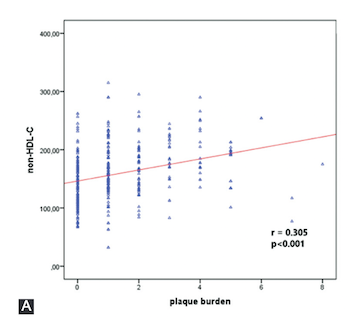Letter regarding “Associations of non-HDL-C and triglyceride/HDL-C ratio with coronary plaque burden and plaque characteristics in young adults”
DOI:
https://doi.org/10.17305/bjbms.2022.7782Keywords:
non-HDL-C and triglyceride/HDL-C ratio , coronary plaque burden, plaque characteristics in young adults, letter to editorAbstract
Dear Editor:
I read with great interest the article by Akin et al., reporting an association between coronary plaque and serum lipid parameters. The authors examined serum lipid levels in patients undergoing computed tomography of the coronary arteries and reported that LDL cholesterol, total cholesterol, non-HDL cholesterol, triglycerides, and the ratio of triglycerides to HDL cholesterol were significantly higher in patients with coronary artery disease, and HDL cholesterol was significantly lower than in patients without coronary atherosclerosis. The results presented in the above study are consistent with data from the literature. Increased total and LDL cholesterol levels were found in patients with adequate coronary collateral development compared with patients with inadequate coronary collateral development.
Read more in PDF.
Citations
Downloads

Downloads
Additional Files
Published
License
Copyright (c) 2022 Gulali Aktas

This work is licensed under a Creative Commons Attribution 4.0 International License.









